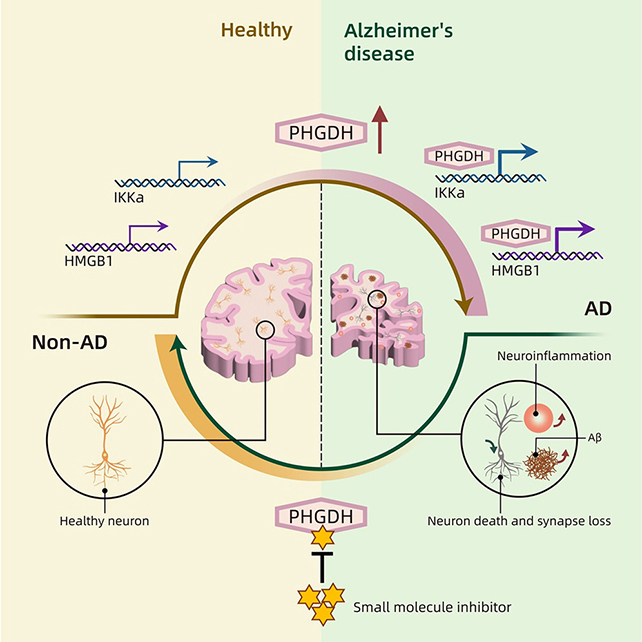Artificial intelligence is a broad term encompassing many different subtypes, from apps that can write poetry to algorithms that are able to spot patterns that would otherwise get missed – and now AI modeling has just played a major role in an Alzheimer's study.
Researchers from the University of California, San Diego (UC San Diego) used AI to discover that a gene recognized as a sign of Alzheimer's disease could be causing it too. It highlights one of the big challenges in the study of Alzheimer's: understanding both the changes the disease causes, and the changes that cause the disease.
An enzyme called phosphoglycerate dehydrogenase (PHGDH), and the gene that encodes it, were the focus here. The researchers had previously established the gene was typically more active in people with faster-progressing Alzheimer's.

What wasn't clear was what was driving this link. The team used AI to model the structure of the PHGDH enzyme more fully, suggesting it had a previously hidden function: flicking switches for other specific genes on and off.
Further analysis showed PHGDH interacting with two genes inside brain cells known as astrocytes, in ways that interfere with the brain's ability to regulate inflammation and clear out waste. The researchers think this could be one of the tipping points triggering Alzheimer's, and explaining the association between PHGDH and the disease.
"It really demanded modern AI to formulate the three-dimensional structure very precisely to make this discovery," says bioengineer Sheng Zhong, from UC San Diego.
Next, the team investigated ways to inhibit PHGDH, but only partly – ideally, a drug would block its ability to regulate genes in astrocytes, while still allowing it to perform its vital enzymatic role.
The team found a molecule called NCT-503 that fit the bill. AI modeling was deployed again to examine the structure of this molecule, and how it interacts with PHGDH. NCT-503 seems to bind to a pocket in PHGDH to stop its unauthorized gene-switching.
There's still a long way to go before an actual Alzheimer's drug might be developed from this finding, but the research has shown that a treatment based on NCT-503 can put up guardrails around PHGDH in mouse models of the disease. The mice that were treated showed improvements in memory and anxiety tests.
"Now there is a therapeutic candidate with demonstrated efficacy that has the potential of being further developed into clinical tests," says Zhong.
"There may be entirely new classes of small molecules that can potentially be leveraged for development into future therapeutics."
Crucially, NCT-503 is able to pass the blood-brain barrier to access neurons and their associated cells, making the new treatment research even more promising. Drugs based on the molecule could even be taken orally.
While it's taking time to unpick the complexities of Alzheimer's disease, and all the different factors involved in its development – from environmental stresses to inherited genetics – each new study gets us a step closer to solutions, and improving how we tackle the condition.
"Unfortunately, treatment options for Alzheimer's disease are very limited," says Zhong. "And treatment responses are not outstanding at this moment."
The research has been published in Cell.